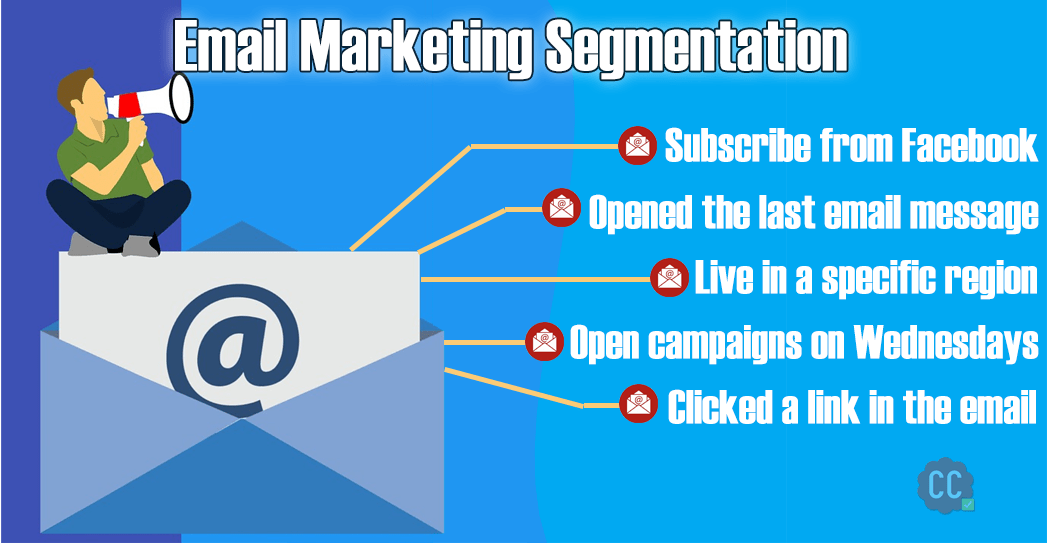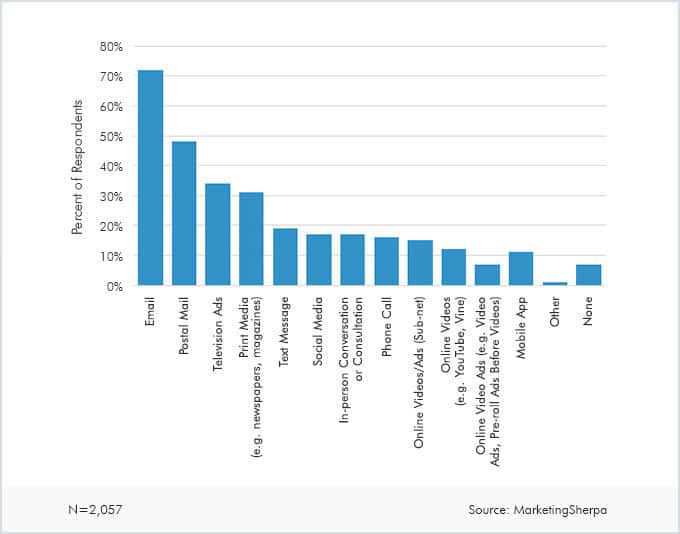
Email marketing is good. Segmentation makes it better. Here I’m going to explain how you can use segmentation to your advantage when implementing your email marketing strategy.
According to this Radicati report, 34% of the people in the world, that’s about 2.5 billion people, use email. Contrary to predictions that email marketing might be on its way out due to social media, the number is projected to increase to 2.8 billion email users in the next 2 years.
The same report says that 196 billion emails are sent daily and out of these, 109 billion are business emails. Even if a major part of this deluge of emails is spam, still, it is a big number to consider.
Why is the use of email so prevalent? Even to open social media and social networking accounts you need an email ID. Useful information is constantly being sent via email. When you get an important notification from your office, provided you are not using a tool like Slack, it comes via email. Teachers are sending homework via email. Banks send OTP via email.
Everyone has an email. If someone uses the Internet, he or she has an email account.
Despite online chat, instant messaging and Twitter, consumers prefer to communicate with brands through email. A Marketing Sherpa study revealed that 72% consumers don’t mind receiving promotional messages through email, provided the messages are useful.

Why doesn’t email lose its sheen? Despite different means of communication popping up almost every week, why does email sustain? Here are a few reasons:
- Most of the email services are free: Email services like Gmail, Yahoo mail, Outlook.com and Hotmail have made sure that everyone can have an email ID free of cost.
- It’s very easy to use email: Email can be used on mobile phones, tablets and computers with equal ease. In fact, these days, email apps for mobile phones have more features than their PC and laptop counterparts.
- Email is very personal: Every email account is protected by a password, and these days, even 2-factor authentication. The information exchange in an email remains confidential. Sharing your email password still remains an intimate act of trust and hence, it is rarely done. Nobody can access your email unless you are hacked or you willingly allow access.
- Email is instant: In most of the cases. The moment you send out an email, it is received by the recipient.
Precisely this is the reason why email marketing still remains a hot activity among online marketers and it is an inseparable part of content marketing.
It’s segmentation that makes your email marketing effective
To be effective and successful, email marketing needs to be data-driven and scientific. If you simply build a mailing list and then go on sending out messages, although you may elicit some response, you won’t be tapping into the full potential of email marketing.
According to a Campaign Monitor finding, businesses have experienced an increase of 760% in their revenue through segmented email marketing.
What’s segmentation?
Segmentation means sending out emails based on the behavior of the recipients, or based on some action that they have recently performed or based on something that is going to have an impact on the way they respond to your email message.
How do you know their behavior? You can’t just know it.
There are many ways of creating segments.
For example, you may have a different sign up form (to build your mailing list) on your Facebook business page. You may have a different subscription form link for your Instagram campaigns.
On your website or on your blog you may have a different sign up form.
I have a signup form on my website and on my blog. People can subscribe to my email updates on their own.
In my contact form I have a checkbox that allows people to tell me if they would like to subscribe to my email updates. The information submitted through the contact form is saved in a Google Docs spreadsheet and then later on I manually add these email addresses (for people who have checked the checkbox) to my mailing list.
I also have a “Hello” bar at the top and people can use that bar to subscribe to my email updates. Once in a month I log into my Hello account, download the email addresses of people who have subscribed using the Hello bar, and then manually add them to my mailing list.
Recently I have started associating tags to different sources so that later on if I want to send an email message to those people who opted to subscribe to my mailing list from my contact form, all I have to do is, segment my campaign using that particular tag.
Then, if you have an online business you may have email ids of people who have registered themselves but have never shopped.
Some email ids may belong to people who recently abandoned the shopping cart.
Some people have just shopped and you would like to send them related offers.
Segments can be created based on people’s job titles or the organizations they work in.
These segmentation methodologies fall outside of the ambit of your email marketing campaigns management tool or service.
You can also create segments according to the way people interact with your email campaigns. You can have different messages for people who clicked a link in your email and those who never clicked.
You can also have different messages for people who opened your last email campaign and those who didn’t.
You get this data gradually, sometimes even after sending your first most campaign. But, the more data you have, the more precise your segmentation gets.
Almost all email marketing services provide segmentation these days
As far as using email marketing services like MailChimp and Constant Contact go, they allow you to create segments very easily, out of the campaigns that you have already sent. You can also send campaigns – in many cases – to people residing in particular regions of the world. For instance, you can send Christmas greetings to your European or American subscribers and Diwali greetings to subscribers living in India.
As mentioned above, you can even create segments on people who opened your email messages on a specific day of the week – for example, those people who opened your message on Wednesday no matter when you send out your messages.
Does segmentation mean creating multiple emails for your email marketing campaigns?
In most of the cases, yes. If you want to increase the effectiveness of your email marketing, one, segmentation is must, and two, highly targeted messages need to be created. This often means creating multiple campaigns. But the effort is worth it.
